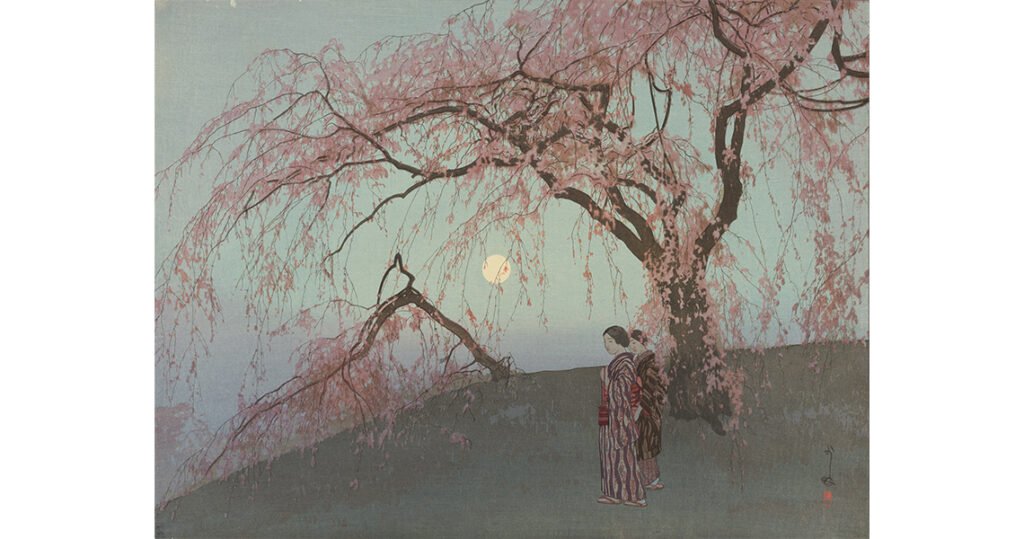The first of the Yoshida Dynasty – Hiroshi – was already an established artist in his homeland, Japan, when he took up printmaking at the age of 44, but the story of six printmaking Yoshidas spread over three generations really begins when Hiroshi visited Dulwich Picture Gallery in 1900 and signed the visitors’ book, writes Michael Holland.
His travels across the globe were the foundation for woodblock prints of The Sphinx, the Grand Canyon, The Matterhorn and the Taj Mahal that earned him a worldwide reputation. His style of work inspired family members to follow him in his craft.
His wife, Fujio, became a pioneer for female artists in Japan and was renowned for her close-up designs of the botanic world; close enough to verge on the abstract.
It was this aspect of her work that inspired their sons, Tōshi and Hodaka, who both brought abstraction to their working practise. Tōshi followed in his father’s footsteps by travelling the world and creating art from the stimulus absorbed on his journey. Most impressive of Tōshi’s, for me, was Camouflage, a print I’d barely looked at on my first stroll through the gallery but was made more aware of its beauty by Dr Monika Hinkel, our curator and exhibition guide on the press tour. What at first looked like nothing remarkable turned into two hunting tigers hidden in the long grass.
His sister Hodaka found motivation elsewhere and her art gives off a Joan Miró vibe with a touch of Kandinsky. Pop Art was big during her time and it shows in her work.
Next in line is Chizuko, wife of Hodaka, and who co-founded the first group of female printmakers in Japan, the Women’s Print Association. Taking elements of abstract from her mother, and often taking them off into the vicinity of the avant-garde, she was said to have connected popular art movements of the time with traditional Japanese printmaking.


The exhibition ends with Ayomi, Hodaka’s and Chizuko’s daughter. Her art combines traditional techniques with contemporary styles and this can be seen in the installation of cherry blossom that covers three walls and includes 10,000 cherry blossom flowers that were printed and cut out by hand for Ayomi to place on the mural she had created. Some appearing far beyond the lines of the trees and into the architecture of the room.
When she first visited the gallery she was shown her grandfather’s entry in the visitors’ book. She closed her eyes and ran her fingers across his signature. Those in attendance knew something special was happening.
Ayomi said: ‘When I saw my grandfather’s signature in the Dulwich Picture Gallery guest book, my heart skipped a beat. What an exciting and intriguing journey it must have been for Hiroshi, then an unknown painter and only 23, travelling from a country so far away. How proud he would be of this family exhibit of six, welcomed 120 years later at this wonderful museum.’
Her installation has been directly inspired by similar work of Hiroshi’s, as well as the cherry trees in Dulwich Village, that were originally taken from the iconic site of Yoshino in Japan.
The family circle is now complete.
Dulwich Picture Gallery, Gallery Road, London SE21 7AD from 19 June – 3 November 2024.
Tuesday to Sunday, 10am–5pm. (inc. bank holidays.) Admission: £20.






